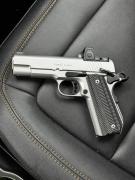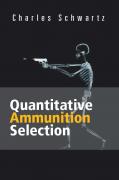https://img1.wsimg.com/blobby/go/b21...=1678600418188
FOR AGENCY / LAW ENFORCEMENT
DISSEMINATION ONLY
Sanitized versions available for general use
UNCLASSIFIED
Is this legit? They seem to love the Xtreme Defense
The Underwood XD uses the Lehigh Defense Xtreme Defense Technology
bullet. They are the same bullet and in some cases Underwood uses slightly
higher pressure which produces more velocity. The radial flutes increase tissue
pressure and direct the tissue outward to increase wound diameter. There is one
main characteristic to XD performance…. Velocity. The faster this round goes
the larger the wound diameter. We tested the 9mm XD, 9 +P, 9+P+ and the 357
SIG in multiple tests in gel and tissue. That’s 4 of the exact same projectiles with
the only difference being velocity. The wound channel size increased exactly in
proportion to increase in velocity. Unlike hollow points which are designed for a
certain impact velocity to best perform as designed, the XD always works better
when faster.
The data sheet shows results from Phase 2/3 with enormous wound diameters.
The radial flutes work perfectly in fluid/gel. Calculated PWCs are the largest
ever recorded in all calibers!
Many of our testers wondered if vectoring real compressed tissue sideways into
tissue would actually destroy that adjacent tissue that is not directly in the path
of the projectile. For those who think this will only work in a non-compressible
fluid like gel as we initially did, we can confirm that this technology works
extremely well in actual animal tissue with or without barriers. Remember that
hollow points expand because tissue which fills the hole in the hollow point is
compressed to such a point that the outward pressure inside the bullet pushes and
tears the metal and forces it outward where friction then takes over to complete
the expansion. If tissue can be compressed to the point of tearing metal (hollow
point) then tissue can certainly be compressed to the point of tearing tissue. The
Phase 4/5 tissue tests confirmed that in over 100 shots the measured wound
channel was not only larger than that of an FMJ but in most cases was the largest
wound channel produced in that caliber compared to all other rounds to include
fully functioning hollow points.
a. Penetration. All rounds in all calibers tested penetrated 15.2 – 20 inches
with and without barriers.
b. Reliability and Consistency. Every single shot did roughly the same thing.
There is a 0% chance of failure to function because there can be no failure
to tumble or expand (because they don’t) and no chance to fragment. This
was the most Reliable and Consistent round tested.
33
c. Barrier Performance. The XD round, the 5.7 mm rounds and FMJs were
the most barrier blind rounds tested. Not only did barriers not deflect the
round it didn’t change the wound diameter much and only slightly reduced
penetration depth. XD Barrier degradation was approximately 5%.
d. PWC. In the Phase 4/5 realistic tissue tests the XD produced the largest
wound areas and with the incredible penetration depth exhibited in the
Phase 2/3 gel tests the XD recorded the largest overall PWC in all calibers.
As noted the PWC numbers are inflated in the Phase 2/3 gel tests due to
non-compressible gel, but the penetration depths are more realistic to
compare.
Overall: This was by far the most impressive round tested. After over a year
of testing this round became the most requested round to test after some of the
agencies reviewed draft shot data. In continued testing this round became the
most measured and compared round in this test. We had more XD data points
than any other round. Because the XD relies so heavily on velocity the results
showed that the 357 SIG, 10mm and 9mm were the best calibers in this round
followed by the .45 and then the .40, the exact opposite of the hollow point
results.




 Reply With Quote
Reply With Quote



